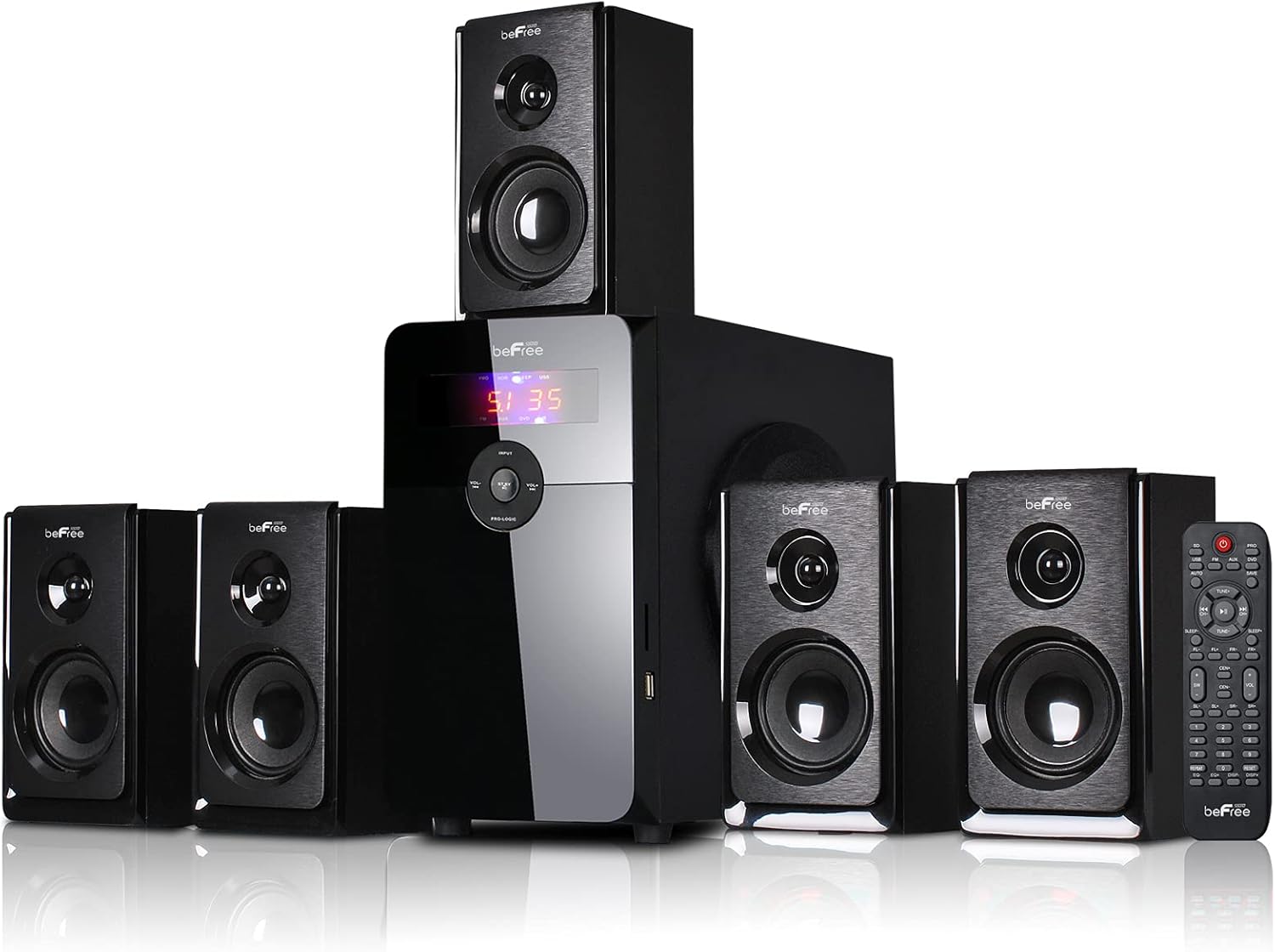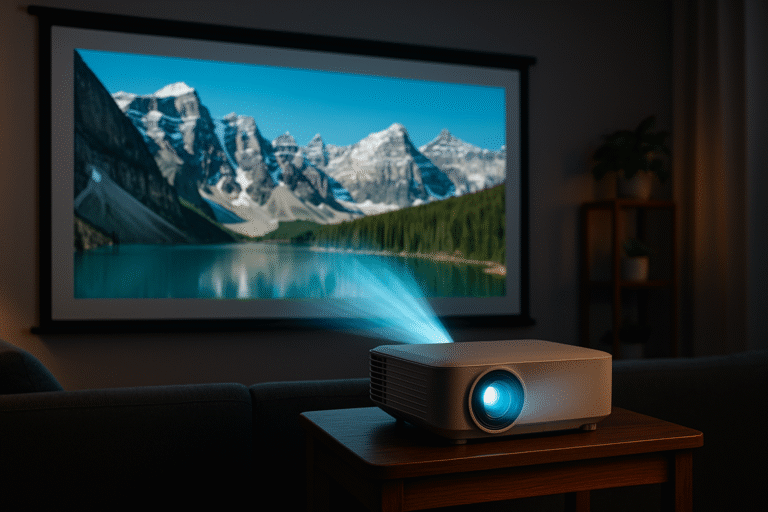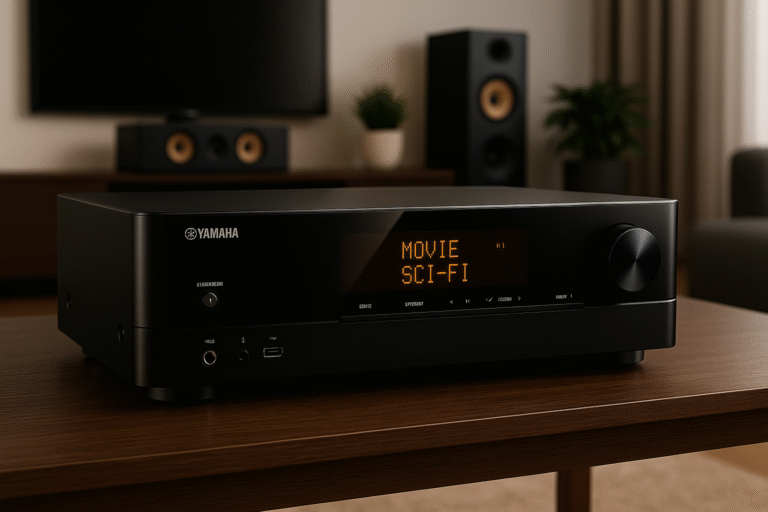The Ultimate Beginner’s Guide to Home Theater Sound Systems (2025 Edition)
If you’re planning to build a home theater—or simply want your favorite movies, games, or music videos to sound spectacular—understanding how sound systems work is essential. This guide walks you through the major audio configurations, the types of speakers involved, how to position them, and the immersive formats that take your experience to the next level.
🎧 Why Surround Sound Matters
Most built-in TV speakers can’t deliver the richness, depth, or directionality that modern content provides. A true surround system creates a soundscape that surrounds you—not just left and right, but front, back, and above. It enhances movie realism, makes music fuller, and turns gaming into a cinematic experience.
🔊 Understanding Speaker Types
1. Main Speakers (Left/Right Front)
These handle the bulk of the soundtrack: music, effects, and directional cues. Bookshelf or tower speakers are ideal.
2. Center Channel Speaker
Responsible for dialog and vocals. Always placed horizontally under or above the screen.
3. Surround Speakers (Side/Rear)
They deliver ambient effects—footsteps, wind, or crowd noise. Depending on your setup, these can be direct speakers or dipole/bipole designs for a wider effect.
4. Height Speakers (for Dolby Atmos, DTS:X)
Mounted in-ceiling, on-wall, or “up-firing” units that bounce sound off the ceiling to simulate overhead audio.
5. Subwoofer
Handles low-frequency effects (LFE), like explosions or deep bass. These are non-directional, and placement in corners—facing forward—is often best for room-filling immersion.
🏡 Ideal Speaker Placement Tips
- Corners for subwoofers: maximize bass response.
- Ear-level front and center channels: ensures clarity.
- Behind or beside you for surround speakers.
- Ceiling or up-firing speakers if using Dolby Atmos or DTS:X.
If you own more than one subwoofer (like a 7.2 system), positioning them in opposite corners can improve balance and reduce dead spots.
🎮 Not Just for Movies
These systems elevate more than films:
- Gaming: 3D audio improves awareness and realism.
- Music Videos & Live Concerts: feel like you’re in the venue.
- Streaming Services: Many platforms support Dolby Atmos or 360 Reality Audio (Spotify, Apple Music, Tidal HiFi).
📊 Quick Comparison Table of Surround Sound Formats
| Format | Audio Type | Lossy/Lossless | Height Channels | Flexibility | Main Use |
|---|---|---|---|---|---|
| Dolby Digital | Channel-based | Lossy | ❌ | Fixed (5.1/7.1) | DVD, TV broadcasts, basic streaming |
| DTS | Channel-based | Lossy | ❌ | Fixed | DVDs, Blu-ray |
| Dolby TrueHD | Channel-based | Lossless | ❌ | Fixed (up to 7.1) | Blu-ray, Blu-ray 4K |
| Dolby Atmos | Object-based | Lossy/Lossless | ✅ | Requires height speakers | Streaming, Blu-ray 4K, games |
| DTS:X | Object-based | Lossy/Lossless | ✅ | Highly flexible | Blu-ray 4K, games, adaptable setups |
| Auro-3D | Layer-based | Lossy/Lossless | ✅ (multi-layer) | Needs exact layout | Specialized theaters, niche Blu-rays |
📚 Breakdown of Each Audio Format
🎬 Dolby Digital (AC-3)
Dolby Digital is a channel-based audio format developed for cinema and later adapted for home use. It supports up to 5.1 channels: left, center, right, surround left, surround right, and one subwoofer (LFE).
- 🧩 Compression: Lossy, but efficient for DVDs and broadcast.
- 📺 Usage: Widely used in DVDs, cable/satellite TV, and digital streaming platforms.
- 🔉 Performance: Delivers clean surround sound, though lacks the vertical dimension of modern formats.
- 🎯 Best for: Entry-level systems, refurbished AV setups, or content from older discs.
🔊 DTS (Digital Theater Systems)
DTS is a direct competitor to Dolby Digital, offering a similar 5.1 channel structure but with higher bitrates, meaning less compression and often cleaner, more detailed sound.
- 🎵 Audio Detail: Preferred by many audiophiles for Blu-ray discs due to its clarity.
- 🧩 Compression: Also lossy, but with a higher ceiling.
- 📀 Usage: Common on Blu-ray and high-definition DVDs.
- 📌 Note: Like Dolby Digital, it’s channel-based and doesn’t support height effects.
💽 Dolby TrueHD
Dolby TrueHD is a lossless, channel-based codec, delivering sound that is bit-for-bit identical to the original studio master.
- 🧩 Compression: None (lossless). Preserves every detail from recording to playback.
- 📀 Usage: Found in Blu-ray and 4K Ultra HD Blu-ray discs.
- 🎧 Performance: Provides superb clarity for 5.1 or 7.1 systems.
- ⚠️ Requires: Compatible AV receiver and HDMI passthrough.
🌀 Dolby Atmos
Dolby Atmos is a revolutionary object-based format that expands sound into three-dimensional space, allowing it to move not only around but also above the listener.
- 🧠 How it works: Adds height channels by assigning sounds as “objects” rather than static channels.
- 🔊 Channel structure: Often built on 5.1 or 7.1 base, with 2–6 height channels (e.g. 5.1.2, 7.1.4).
- 🎧 Speakers: Supports in-ceiling, up-firing, or wall-mounted height speakers.
- 📺 Where to find it: Streaming platforms (Netflix, Disney+, Apple TV+), Blu-ray 4K, Xbox/PS5 games.
- 🎯 Best for: Full 3D sound immersion in home cinema setups.
🎮 DTS:X
DTS:X is another object-based surround format and the closest competitor to Dolby Atmos. Its key strength is flexibility.
- 🔧 No fixed layout required: Adapts to the speaker setup you already have.
- 🔊 Height support: Optional, but supported if available.
- 🗣️ Dialog control: Lets you adjust speech volume independently of other sounds.
- 📀 Usage: Found in many Blu-rays and 4K discs; supported by most modern AV receivers.
- 🎯 Ideal for: Custom or refurbished systems where ceiling speakers aren’t possible.
🎼 DTS-HD Master Audio
DTS-HD MA is a lossless format designed for Blu-ray and home theaters that need high-resolution audio. It’s a channel-based format but allows for extremely high fidelity.
- 🧩 Compression: Hybrid (lossy core + lossless extension).
- 🔊 Channels: Supports up to 7.1 discrete channels.
- 📀 Usage: Common on Blu-ray discs as the high-end alternative to regular DTS.
- 🎯 Best for: Pure sound quality lovers who don’t need object-based sound.
🧠 Tips for Building Your System
- Receivers from Denon, Yamaha, Onkyo, Marantz, Sony, Pioneer support multiple formats.
- Always check ohm compatibility if using second-hand speakers.
- Don’t pair a high-end AV receiver with low-quality speakers.
- Used systems from Japan or Europe often offer premium performance at lower cost.
🌐 Music Streaming with Spatial Audio
- Platforms like Spotify, Apple Music, Tidal HiFi, and Deezer now include support for surround or spatial audio.
- Make sure your AV receiver and speakers are correctly configured to enjoy 360° soundtracks.
Explore Amazon listings by region
As an Amazon Associate, I earn from qualifying purchases. Your support helps keep this site running.
🧩 Final Thoughts
Investing in a home theater sound system is more than upgrading your TV—it’s about transforming your entire audiovisual experience. Whether you’re watching a blockbuster, playing immersive games, or just vibing with your favorite artist in spatial audio, knowing your formats and positioning your speakers right makes all the difference.
This post is optimized for international users comparing AV systems, especially those exploring refurbished audio gear from Japan and Europe.


